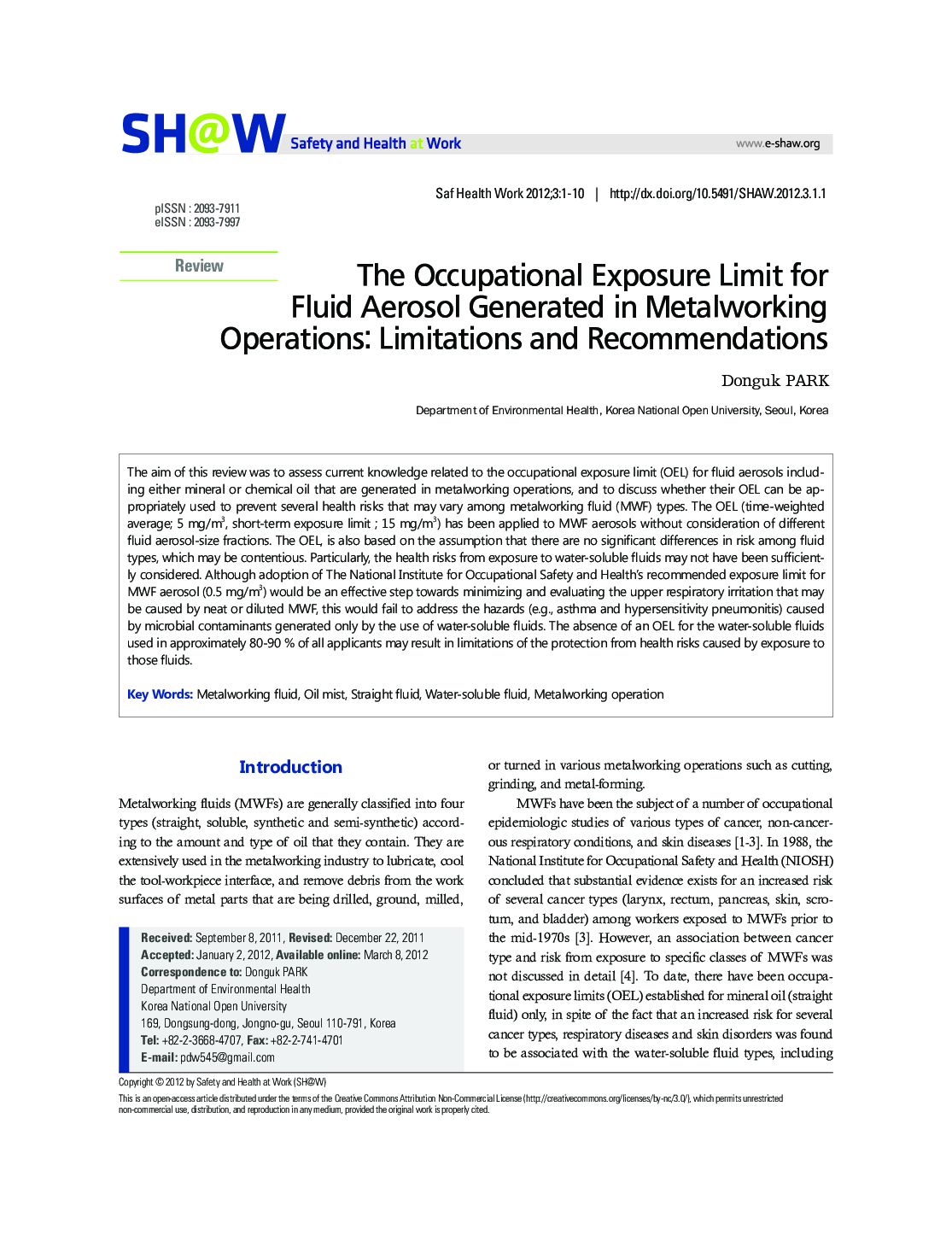| Article ID | Journal | Published Year | Pages | File Type |
|---|---|---|---|---|
| 1092239 | Safety and Health at Work | 2012 | 10 Pages |
The aim of this review was to assess current knowledge related to the occupational exposure limit (OEL) for fluid aerosols including either mineral or chemical oil that are generated in metalworking operations, and to discuss whether their OEL can be appropriately used to prevent several health risks that may vary among metalworking fluid (MWF) types. The OEL (time-weighted average; 5 mg/m3, short-term exposure limit ; 15 mg/m3) has been applied to MWF aerosols without consideration of different fluid aerosol-size fractions. The OEL, is also based on the assumption that there are no significant differences in risk among fluid types, which may be contentious. Particularly, the health risks from exposure to water-soluble fluids may not have been sufficiently considered. Although adoption of The National Institute for Occupational Safety and Health's recommended exposure limit for MWF aerosol (0.5 mg/m3) would be an effective step towards minimizing and evaluating the upper respiratory irritation that may be caused by neat or diluted MWF, this would fail to address the hazards (e.g., asthma and hypersensitivity pneumonitis) caused by microbial contaminants generated only by the use of water-soluble fluids. The absence of an OEL for the water-soluble fluids used in approximately 80-90 % of all applicants may result in limitations of the protection from health risks caused by exposure to those fluids.
